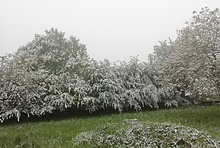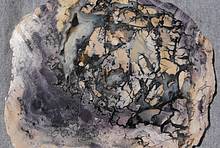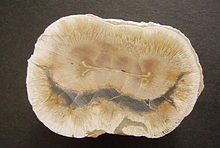Home PageAbout MindatThe Mindat ManualHistory of MindatCopyright StatusWho We AreContact UsAdvertise on Mindat
Donate to MindatCorporate SponsorshipSponsor a PageSponsored PagesMindat AdvertisersAdvertise on Mindat
Learning CenterWhat is a mineral?The most common minerals on earthInformation for EducatorsMindat ArticlesThe ElementsThe Rock H. Currier Digital LibraryGeologic Time
Minerals by PropertiesMinerals by ChemistryAdvanced Locality SearchRandom MineralRandom LocalitySearch by minIDLocalities Near MeSearch ArticlesSearch GlossaryMore Search Options
The Mindat ManualAdd a New PhotoRate PhotosLocality Edit ReportCoordinate Completion ReportAdd Glossary Item
Mining CompaniesStatisticsUsersMineral MuseumsClubs & OrganizationsMineral Shows & EventsThe Mindat DirectoryDevice SettingsThe Mineral Quiz
Photo SearchPhoto GalleriesSearch by ColorNew Photos TodayNew Photos YesterdayMembers' Photo GalleriesPast Photo of the Day GalleryPhotography
╳Discussions
💬 Home🔎 Search📅 LatestGroups
EducationOpen discussion area.Fakes & FraudsOpen discussion area.Field CollectingOpen discussion area.FossilsOpen discussion area.Gems and GemologyOpen discussion area.GeneralOpen discussion area.How to ContributeOpen discussion area.Identity HelpOpen discussion area.Improving Mindat.orgOpen discussion area.LocalitiesOpen discussion area.Lost and Stolen SpecimensOpen discussion area.MarketplaceOpen discussion area.MeteoritesOpen discussion area.Mindat ProductsOpen discussion area.Mineral ExchangesOpen discussion area.Mineral PhotographyOpen discussion area.Mineral ShowsOpen discussion area.Mineralogical ClassificationOpen discussion area.Mineralogy CourseOpen discussion area.MineralsOpen discussion area.Minerals and MuseumsOpen discussion area.PhotosOpen discussion area.Techniques for CollectorsOpen discussion area.The Rock H. Currier Digital LibraryOpen discussion area.UV MineralsOpen discussion area.Recent Images in Discussions
Mineralogical ClassificationIMA 2013-024 = yeomanite
27th Nov 2015 12:39 UTCMarco E. Ciriotti Manager
▪ Turner, R.W., Siidra, O.I., Rumsey, M.S., Polekhovsky, Y.S., Kretser, Y.L., Krivovichev, S.V., Spratt, J., Stanley, C.J. (2015): Yeomanite, Pb2O(OH)Cl, a new chain-structured Pb oxychloride from Merehead Quarry, Somerset, England. Mineralogical Magazine, 79, 1203-1211.
Abstract:
Yeomanite, Pb2O(OH)Cl, is a new Pb-oxychloride found in the manganese pod mineral assemblage at Merehead (Torr Works) Quarry, near Cranmore, Somerset, England. Yeomanite is named in joint recognition of Mrs Angela Yeoman (1931–) and her company, Foster Yeoman, who operated Merehead Quarry for aggregate until 2006. The mineral is normally white, occasionally grey, with a white streak and a vitreous to transparent lustre. Invariably intimately associated with mendipite, yeomanite appears to be formed of small, twisted, rope-like fibres growing from the end of columnar mendipite masses, forming loose mats and strands resembling asbestos. Individual fibres are generally <8 mm long, but exceptionally may reach up to 15 mm. There is a perfect cleavage parallel to the long axis of the fibres but this is masked by the fibrous nature, especially as individual fibres break easily. The Dcalc for the ideal formula is 7.303 g/cm3. The mean RI in air at 589 nm is 2.27. The eight strongest reflections in the powder X-ray diffraction pattern [(d in Å) (Intensity) (hkl)] are: 2.880(100)(113); 2.802(78)(006); 3.293(61)(200); 3.770(32)(011); 2.166(22)(206); 1.662(19)(119); 2.050(18)(303); 3.054(17)(105). Yeomanite is orthorhombic, Pnma, a = 6.585(10), b = 3.855(6), c = 17.26(1) Å, V = 438(1) Å3, Z = 4. Yeomanite is a new example of the growing family of lead oxychloride minerals that have a structure based upon oxocentred OPb4 tetrahedra, which, in this mineral, jointly with OHPb3 triangles, form [O(OH)Pb2]+ chains similar to those observed in synthetic Pb2O(OH)I. Yeomanite is structurally related to sidpietersite, penfieldite and laurionite.

7th Dec 2015 16:50 UTCKnut Edvard Larsen 🌟 Manager




Mindat.org is an outreach project of the Hudson Institute of Mineralogy, a 501(c)(3) not-for-profit organization.
Copyright © mindat.org and the Hudson Institute of Mineralogy 1993-2024, except where stated. Most political location boundaries are © OpenStreetMap contributors. Mindat.org relies on the contributions of thousands of members and supporters. Founded in 2000 by Jolyon Ralph.
Privacy Policy - Terms & Conditions - Contact Us / DMCA issues - Report a bug/vulnerability Current server date and time: April 23, 2024 21:19:44
Copyright © mindat.org and the Hudson Institute of Mineralogy 1993-2024, except where stated. Most political location boundaries are © OpenStreetMap contributors. Mindat.org relies on the contributions of thousands of members and supporters. Founded in 2000 by Jolyon Ralph.
Privacy Policy - Terms & Conditions - Contact Us / DMCA issues - Report a bug/vulnerability Current server date and time: April 23, 2024 21:19:44











